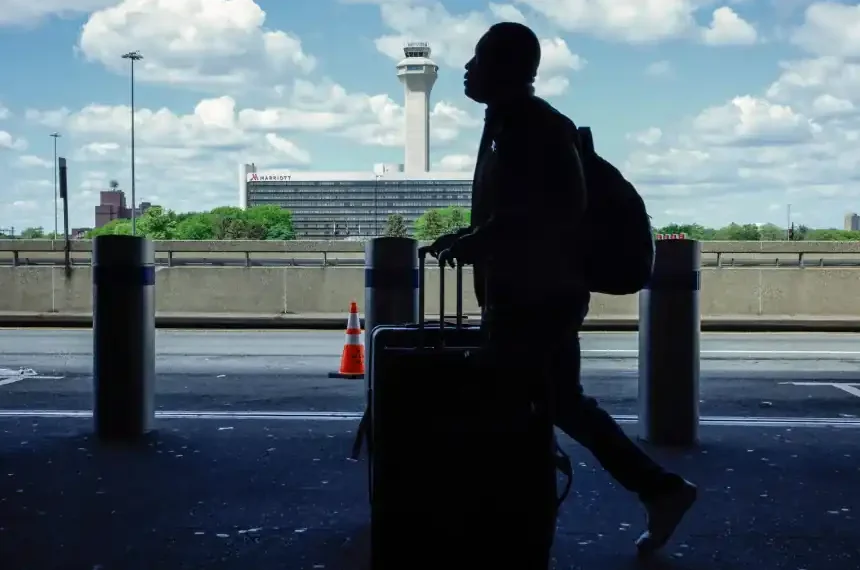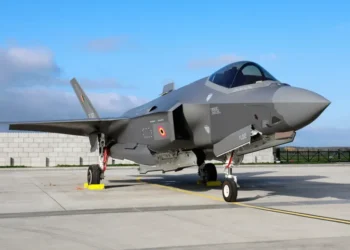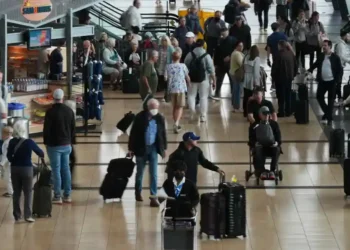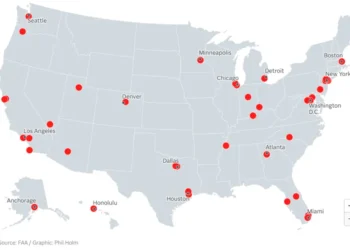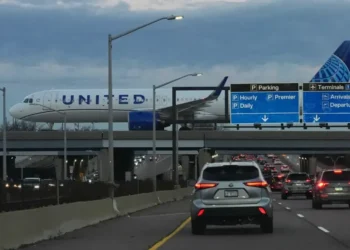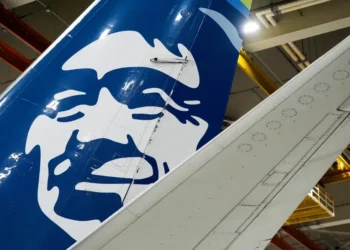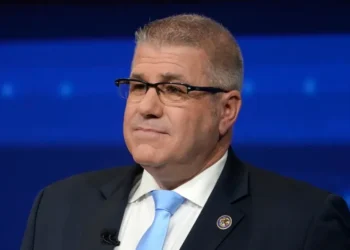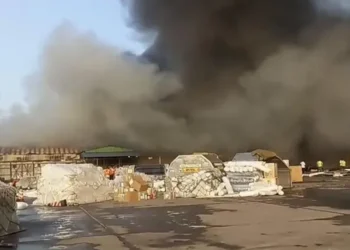Newark Airport Faces Ongoing Chaos as Experts Warn of More Travel Troubles Ahead
Newark Liberty International Airport, one of the busiest hubs in the United States, is in the midst of a crisis that has led to thousands of flight delays and cancellations. Over the past two weeks, a combination of outdated technology, staffing shortages, and equipment failures has disrupted air traffic, causing major frustration for travelers.
The airport, already struggling with a range of challenges, is facing a “perfect storm” of issues, including a communications system that still relies on floppy disks and copper wires, and radar operations run through a remote line described as “a long extension cord.” This has resulted in air traffic controllers losing contact with planes, prompting several controllers to take trauma leave due to the intense stress of the technical failures.
With the summer travel season approaching, experts predict that the situation at Newark could continue to worsen. “It will be a dreadful summer, especially around high-volume holidays like the Fourth of July and Labor Day,” warned Peter Goelz, a CNN aviation analyst and former managing director of the National Transportation Safety Board.
System Failures and Staffing Shortages: A Deepening Crisis
Despite the hope that air traffic controllers on leave might return soon, experts agree that the core issues at Newark—particularly the outdated technology—cannot be fixed or replaced quickly. The situation even worsened on Friday, with air traffic controllers at Newark briefly losing radar for 90 seconds, further highlighting the fragility of the system.
Colin Scoggins, a former FAA military specialist and retired air traffic controller, emphasized that fixing the air traffic control system and hiring new controllers will take time. “It just can’t be done quickly,” he said.
To address these issues, the US Department of Transportation announced a three-year plan on Thursday to overhaul the country’s air traffic control system. By 2028, the plan will replace critical infrastructure such as radar, software, and telecommunications networks, including the failing copper wiring. Transportation Secretary Sean Duffy warned that without these upgrades, similar breakdowns will continue to plague the nation’s airspace.
What Went Wrong at Newark? A Breakdown in Communications
On April 28, Newark’s communication system suffered a major outage after a failure in the data feed connecting air traffic controllers in Philadelphia and Long Island. This outage caused chaos as controllers lost the ability to see planes on radar or communicate with pilots, forcing the cancellation of over a thousand flights. The incident also led to several air traffic controllers taking trauma leave due to the stress of managing the situation.
“This was a landmark event,” said Mary Schiavo, CNN’s aviation and transportation analyst. She noted that the communications crash reflected the deeper issues plaguing the air traffic control system—namely, an outdated infrastructure and chronic understaffing.
United Airlines CEO Scott Kirby stated that the outage affected 20% of the air traffic control staff at the radar facility in Philadelphia. The staffing shortages have been a long-standing problem, with the FAA currently facing a critical shortage of air traffic controllers nationwide.
Long-Term Solutions and Short-Term Fixes
While the FAA is taking steps to increase staffing levels at Newark, experts agree that a complete fix will take years. According to the National Air Traffic Controllers Association, the country needs over 3,000 new controllers to reach adequate staffing levels. The current staffing is at its lowest point in nearly 30 years, exacerbating the difficulties faced by air traffic controllers.
Adding to Newark’s woes, the airport’s busiest runway has been closed for “rehabilitation work” until mid-June, further limiting capacity and contributing to delays.
In the short term, United Airlines has asked the federal government to implement “level three slot controls” at Newark, which would limit the number of flights any airline could schedule to take off or land at the airport. However, this could lead to fewer available flights, creating additional frustration for travelers.
What’s Next for Newark and the Aviation Industry?
The chaos at Newark has exposed the vulnerabilities of the entire U.S. air traffic control system. With a combination of outdated technology, staffing shortages, and logistical challenges, the airport has become a microcosm of the broader problems affecting American aviation.
As Newark continues to struggle, experts urge that immediate steps be taken to address the underlying issues. While the three-year plan to overhaul the air traffic control system is a promising first step, it will take time to implement—and for travelers, that means months of continued frustration.
Until these problems are resolved, travelers can expect delays, cancellations, and disruptions, particularly as the summer travel season ramps up. The situation at Newark Liberty International Airport serves as a stark reminder of the critical need for investment in the nation’s air traffic control infrastructure.
This article was rewritten by JournosNews.com based on verified reporting from trusted sources. The content has been independently reviewed, fact-checked, and edited for accuracy, neutrality, tone, and global readability in accordance with Google News and AdSense standards.
All opinions, quotes, or statements from contributors, experts, or sourced organizations do not necessarily reflect the views of JournosNews.com. JournosNews.com maintains full editorial independence from any external funders, sponsors, or organizations.
Stay informed with JournosNews.com — your trusted source for verified global reporting and in-depth analysis. Follow us on Google News, BlueSky, and X for real-time updates.
